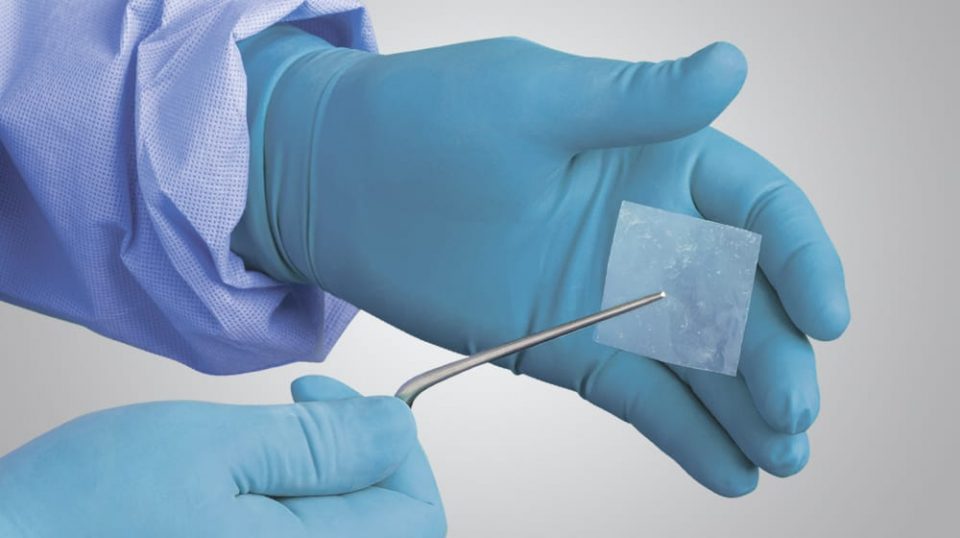Highlights
The VersaShield™ amniotic membrane is designed to serve as a wound covering and protective barrier for a variety of surgical demands.
- Derived from the human placental layers, amnion and chorion, these thin elastic membranes allow the tissue to conform to the surface or surgical site
- Featuring excellent handling properties, the VersaShield amniotic membrane is flexible, easy to use and can be sized intra-operatively
- Resorbs naturally and acts as a physiologic barrier or wound covering
The amniotic membrane is a multi-layered non-vascularized tissue found in the placenta. Amniotic tissues are comprised of a single layer of epithelial cells, a thick basement membrane, and a non-vascular stromal layer. Within the non-vascular stromal layer exists a fibrous layer consisting of various collagen types, including collagen III. Amniotic tissues have been used in surgical applications for an array of regenerative needs since the early 1900’s1-5. Lacking a protective barrier, post-operative adhesions between adjacent tissues such as muscle, nerves, and fascia layers may result in scarring, reduced motion or pain. MTF Biologics is the exclusive processor of the VersaShield amniotic membrane.

